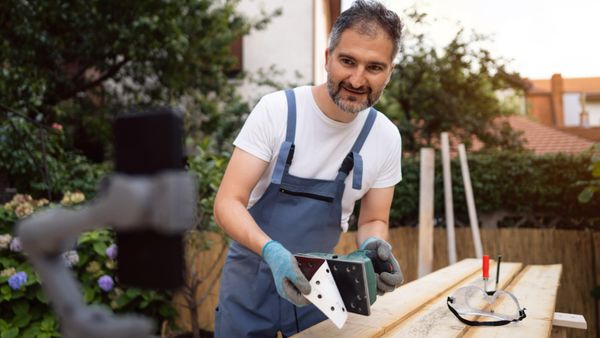The final stage of installing drywall, before any priming and painting of the wall can be done, is the sanding process. After hanging the drywall, you have to apply several coats of mud and then sand it until smooth. Get ready for a load of dust, so seal off entrances and doors as best you can to avoid spreading dust. Get yourself ready too, with safety goggles and a face mask to prevent inhalation of particles. Inhaling dust can cause serious damage to your lungs. Even if you are tempted to open up those windows for some air circulation, don't. Stirring up fine dust particles can ruin all your hard work.
The drywall installation process includes applying three layers of mud. It's important to note that sanding should only be done once, after the final layer. It's not necessary to sand after every coat, and it would only make an already hard job even harder. Use a drywall sander to even out the drywall and smooth over holes that were filled in with putty.
Advertisement
There are different kinds of drywall sanders available. A swivel pole sander makes it easy to reach ceilings and every part of the wall. Manual sanders are good for making small repairs. You can attach a sponge, or sandpaper. Dustless sanders have built-in vacuums. They can get into hard-to-reach areas and use a special type of mesh sandpaper that doesn't clog.
The wall must be completely dry for efficient sanding. You can sand with a wet sponge only if the mud is fairly even or for small areas; clean and wring out the sponge frequently as you work. This will save you the mess and cleanup of dry sanding. Vacuuming up every bit of dust as you go along is important, to avoid dust getting settling into cracks. The walls have to be wiped down after sanding, as well as before priming and painting.
Advertisement
